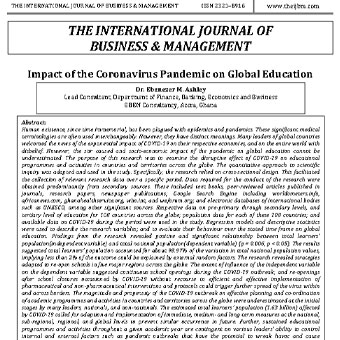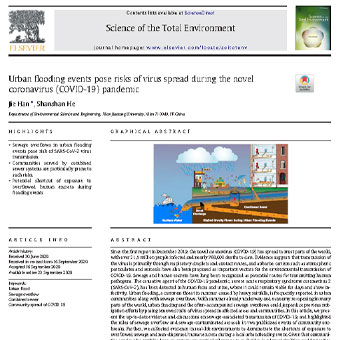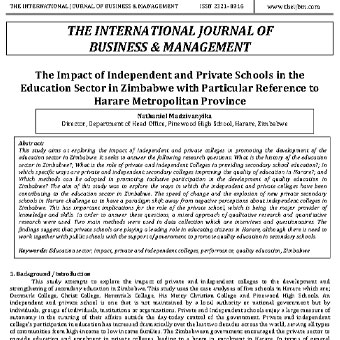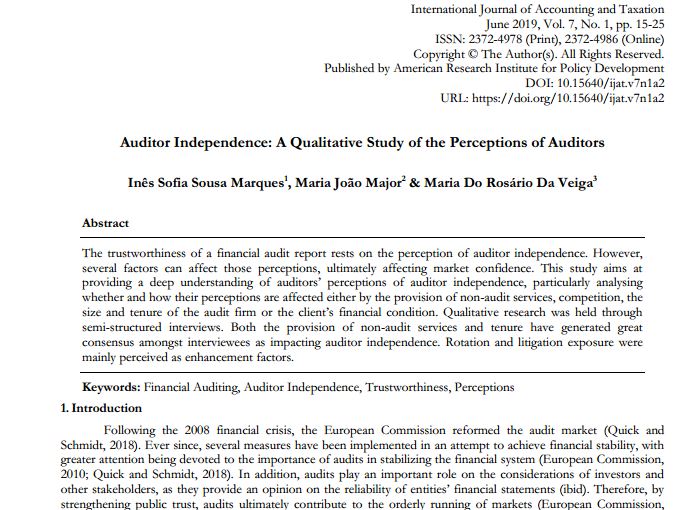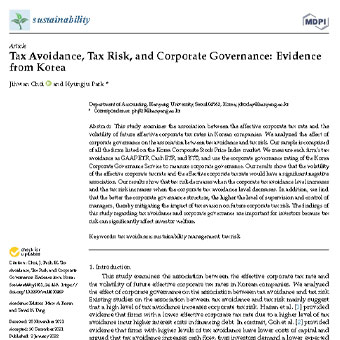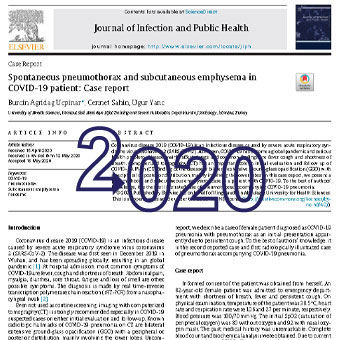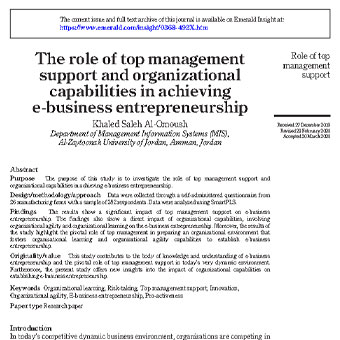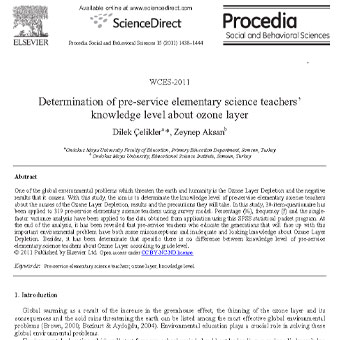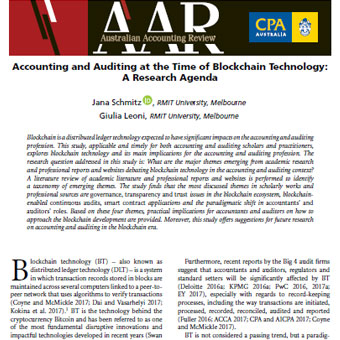عنوان فارسی مقاله:تأثیر همه گیری ویروس کرونا بر آموزش جهانی
چکیده
بشر از زمان های بسیار قدیم با بیماری های همه گیر و پاندمیک مواجه بوده است. این اصطلاحات مهم پزشکی اغلب به جای هم استفاده می شوند. با این حال، آنها معانی متمایز دارند. بسیاری از رهبران کشورهای جهان با ناباوری از اخبار تأثیر تصاعدی COVID-19 بر اقتصادهای مربوطه خود و کل جهان استقبال کردند. با این حال، هیاهوی ایجاد شده و تأثیر اجتماعی-اقتصادی این بیماری همه گیر بر آموزش جهانی را نمی توان دست کم گرفت. هدف از این تحقیق بررسی تأثیر مخرب کووید-۱۹ بر برنامهها و فعالیتهای آموزشی در کشورها و مناطق در سراسر جهان بود. رویکرد کمی برای تحقیق علمی اقتباس شد و در مطالعه استفاده شد. به طور خاص، این تحقیق بر اساس طراحی مقطعی است. این امر گردآوری داده های تحقیق مرتبط را در یک دوره خاص تسهیل کرد. داده های مورد نیاز برای انجام پژوهش عمدتاً از منابع ثانویه به دست آمده است. اینها شامل کتابهای درسی، مقالات بررسی شده در مجلات، مقالات پژوهشی، نشریات روزنامه می باشد. موتور جستجوی گوگل شامل worldometers.info، africanews.com، ghanahealthservice.org، who.int و weforum.org؛ و پایگاه های الکترونیکی نهادهای بین المللی مانند یونسکو، از جمله منابع مهم دیگر. دادههای مربوط به سطوح پیش دبستانی تا متوسطه، و سطح تحصیلات عالی برای ۱۰۸ کشور در سراسر جهان؛ داده های جمعیتی برای هر یک از این ۱۰۸ کشور؛ و داده های موجود در مورد COVID-19 در طول دوره در این مطالعه استفاده شد. برای توصیف متغیرهای تحقیق از مدل های رگرسیون و آمار توصیفی و برای ارزیابی رفتار آنها در چارچوب زمانی اعلام شده در آموزش جهانی استفاده شد.. یافتههای پژوهش نشان داد که بین کل جمعیت فراگیران (متغیر مستقل) و کل جمعیت ملی (متغیر وابسته) رابطه مثبت و معناداری وجود دارد (۰۰۶/۰=p، ۰۵/۰p<). نتایج نشان داد که کل جمعیت فراگیران حدود ۹۷/۹۸ درصد از تغییرات در ارزشهای کل جمعیت ملی را تشکیل میدهند، که نشان میدهد کمتر از ۲ درصد از نتیجه را میتوان با عوامل تصادفی خارجی توضیح داد. این تحقیق استراتژیهایی را نشان داد که برای بازگشایی مدارس در پنج منطقه بزرگ در سراسر جهان سازگار شدهاند. میزان تأثیر متغیر مستقل بر متغیر وابسته، بازگشایی مداوم مدارس در طول شیوع COVID-19 را پیشنهاد می کند. و بازگشایی بعد از تعطیلی مدارس ناشی از کووید-۱۹ بدون توسل به اجرای مؤثر و مؤثر مداخلات و پروتکلهای دارویی و غیردارویی میتواند باعث گسترش بیشتر ویروس در داخل و خارج از مرزها شود. بزرگی و تمایل شیوع COVID-19 در برنامه ریزی و هماهنگی مؤثر برنامه ها و فعالیت های دانشگاهی در کشورها و مناطق در سراسر جهان در مراحل اولیه توسط بسیاری از رهبران، اتباع و غیر ملیت ها دست کم گرفته شد. برآورد کل جمعیت فراگیران (۱٫۶۳ میلیارد) که تحت تأثیر COVID-19 قرار گرفتهاند، خواستار انطباق و اجرای اقدامات فوری، میانمدت و بلندمدت در سطوح ملی، زیر منطقهای، منطقهای و جهانی برای جلوگیری از وقوع مشابه در آینده است. علاوه بر این، برنامهها و فعالیتهای آموزشی پایدار در طول یک سال تحصیلی معین به توانایی رهبران مختلف برای کنترل عوامل داخلی و خارجی مانند شیوع بیماریهای همهگیر که پتانسیل ایجاد ویرانی و ایجاد اختلال را دارند، بستگی دارد. در طول شیوع بیماری های همه گیر و همه گیر، تصمیمات مربوط به تعطیلی مدارس باید زودتر گرفته شود تا از شیوع غیرقابل کنترل جلوگیری شود. COVID-19 نقش اجتناب ناپذیر سیستم ترکیبی را در ارائه خدمات آموزشی مؤثر در دوره های فعلی و آینده تأیید کرد. سهم آفریقا از کل مصرف پهنای باند اینترنت بین المللی؛ و تولید و عرضه برق باید به میزان قابل توجهی افزایش یابد تا منعکس کننده تعهد قاره به بهبود ساختارهای موجود برای اطمینان از کارایی و اثربخشی در ارائه خدمات آموزشی باشد. نیاز مبرمی به مربیان کلاسیک وجود دارد که به سرعت تکامل یابند تا روشها و شیوههای آموزشی مدرن را تطبیق دهند، بنابراین در محیط آموزشی و یادگیری جهانی پویا و همیشه در حال تغییر جا نمانند(تأثیر ویروس کرونا بر آموزش جهانی).
- لینک دانلود فایل بلافاصله بعد از پرداخت وجه به نمایش در خواهد آمد.
- همچنین لینک دانلود به ایمیل شما ارسال خواهد شد به همین دلیل ایمیل خود را به دقت وارد نمایید.
- ممکن است ایمیل ارسالی به پوشه اسپم یا Bulk ایمیل شما ارسال شده باشد.
- در صورتی که به هر دلیلی موفق به دانلود فایل مورد نظر نشدید با ما تماس بگیرید.
 متن به فارسی | ترجمه مقالات و متون علمی | ترجمه و دانلود مقالات و انواع متون علمی و ادبی و پذیرش سفارش ترجمه
متن به فارسی | ترجمه مقالات و متون علمی | ترجمه و دانلود مقالات و انواع متون علمی و ادبی و پذیرش سفارش ترجمه
